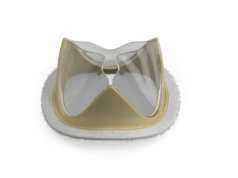A new study from the NYU School of Medicine, New York, US, found that women may have a slightly higher risk of death than men in the 30 days following an acute coronary syndrome, but that these differences appear to be attributable to factors such as severity and type of syndrome.
The study, published in the 26 August 2009 issue of the Journal of the American Medical Association (JAMA), found, however, that overall there was no significant difference in mortality observed between the sexes after a heart attack. The large observational study pooled 136,247 acute coronary syndrome patients from 11 independent, international randomised clinical trials between 1993 and 2006.
“Our research concludes that there is a difference in mortality between men and women depending on the type of acute coronary syndrome they suffer,” said lead study author, Jeffrey Berger, director of Cardiovascular Thrombosis, Cardiovascular Clinical Research Center, The Leon H Charney Division of Cardiology at NYU School of Medicine. “Among STEMI or more severe heart attacks, 30 day mortality was significantly higher among women than men. For NSTEMI or less severe heart attacks and unstable angina women had lower 30 day mortality than men. The lower risk in women after a less severe presentation is likely explained by the less severe blockages seen in women. The higher risk of women after a more severe presentation – following total coronary occlusion STEMI – may be explained by the reduced collateral blood flow observed in women.”
According to study authors, sex is an important factor in the study of acute coronary syndrome and should be considered in future research and delivery of care to men and women who present with ACS. “This study shines a light on ACS in men and women. Studies like this have the ability to improve healthcare for men and women- helping physicians understand sex-differences in why heart attacks happen, and therefore target treatments more effectively and provide for better outcomes,” said Berger.
The study highlights the important sex-differences in the complex spectrum of ACS including how plaque rupture is more common in men, but plaque erosion is more common in women. Women were older at the time of ACS with more comorbidities such as diabetes, hypertension and hypercholesterolemia. Women who underwent catheterisation were more likely to have non-obstructive disease and less multi-vessel disease than men. This difference was most pronounced in NSTEMI or unstable angina, where women had a two-fold higher prevalence of non-obstructive disease. Women had lower rates of coronary stenosis compared to men.
“Discovering and understanding the health differences among men and women may lead to better diagnostics, risk assessment and better treatment of all patients with ACS and the ability to save more lives,” said co-author Judith Hochman, Harold Snyder Family Professor of Cardiology and director of Cardiovascular Clinical Research Center at New York University School of Medicine. ” Our study indicates that STEMI, NSTEMI and unstable angina should be evaluated separately. We are actively investigating the mechanism of STEMI and NSTEMI heart attacks in women without coronary blockages.”
This study was funded by the American Heart Association and Duke Clinical Research Institute, and completed in collaboration with New York University School of Medicine, New York, NY; Duke Clinical Research Institute, Durham, NC; University of Alberta, Edmonton, Alberta; University of Sydney, Sydney, Australia; Auckland City Hospital, Auckland, New Zealand; Gasthuisberg University Hospital, Leuven, Belgium; Scripps Translational Research Institute and Scripps Clinic, La Jolla, California.











